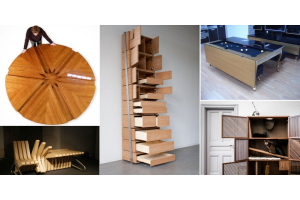In today’s world, where remote work has become the norm, having an efficient and well-organized home office is crucial for maintaining productivity and focus. A cluttered and disorganized workspace can lead to distractions, reduced efficiency, and increased stress. On the other hand, a thoughtfully arranged home office can inspire creativity, enhance concentration, and foster a sense of calm. Whether you’re setting up a new home office or looking to revamp your existing one, this comprehensive guide will help you create a functional and inspiring workspace that maximizes your productivity and supports your professional success. Let’s dive into the essential steps and strategies for organizing your home office to achieve the ultimate work-from-home experience.
Creating a well-organized home office is essential for maintaining focus, efficiency, and a positive work environment. Here’s a comprehensive guide to help you transform your home office into a productivity powerhouse:
1. Choose the Right Location
-
- Quiet and Private: Select a space that minimizes distractions and offers privacy.
- Natural Light: If possible, choose a location with plenty of natural light to boost mood and energy levels.
- Comfortable Temperature: Ensure the space is comfortable in terms of temperature and ventilation.
2. Invest in Ergonomic Furniture
-
- Desk: Opt for a desk with ample space for your computer, documents, and other essentials.
- Chair: Invest in an ergonomic chair that supports your back and promotes good posture.
- Adjustable Options: Consider sit-stand desks and adjustable monitor stands to reduce strain.
3. Organize Your Desk Space
-
- Declutter: Keep only essential items on your desk to reduce distractions.
- Storage Solutions: Use drawers, shelves, and desk organizers to store supplies and documents.
- Cable Management: Use cable organizers to keep cords tidy and prevent tangling.

4. Create a Filing System
-
- Digital Files: Organize digital files with clear folder structures and consistent naming conventions.
- Physical Files: Use a filing cabinet or file boxes to organize physical documents by category.
- Regular Maintenance: Schedule regular intervals to declutter and update your filing system.
5. Incorporate Storage Solutions
-
- Shelving: Install shelves for books, supplies, and decorative items to keep your desk clear.
- Drawers and Cabinets: Use drawers and cabinets to store items that you don’t need frequently.
- Labeling: Label storage containers and shelves for easy identification and retrieval.
6. Optimize Your Workflow
-
- Zone Workspaces: Designate specific areas for different tasks, such as computer work, reading, and brainstorming.
- Accessibility: Keep frequently used items within easy reach to minimize time spent searching for them.
- Task Management: Use a planner or digital tool to organize tasks and set priorities.
7. Personalize Your Space
-
- Inspiration: Decorate with items that inspire and motivate you, such as artwork, plants, and personal mementos.
- Comfort: Add a comfortable rug, cushions, and lighting to create a pleasant atmosphere.
- Balance: Ensure personalization doesn’t lead to clutter; keep it minimal and meaningful.
8. Enhance Lighting
-
- Natural Light: Position your desk near a window to benefit from natural light.
- Task Lighting: Use desk lamps and task lighting to ensure your workspace is well-lit.
- Avoid Glare: Position screens and lighting to reduce glare and eye strain.
9. Incorporate Technology Wisely
-
- Essential Devices: Equip your office with necessary technology like a computer, printer, and reliable internet connection.
- Backup Solutions: Implement regular backup solutions for important files to prevent data loss.
- Noise Control: Use noise-canceling headphones or a white noise machine to minimize auditory distractions.
10. Maintain Cleanliness
-
- Daily Tidying: Spend a few minutes at the end of each day to tidy your workspace.
- Deep Cleaning: Schedule regular deep cleaning sessions to maintain a fresh and inviting office environment.
- Disinfecting: Keep disinfecting wipes handy to regularly clean surfaces, especially if you share the space with others.
Conclusion
A well-organized home office can significantly boost your productivity and create a more enjoyable work environment. By implementing these tips, you can transform your workspace into an efficient, comfortable, and inspiring area that supports your professional success.











